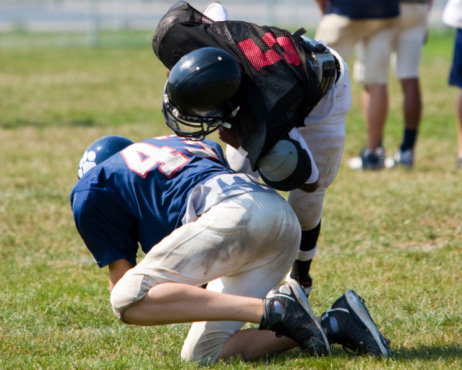Teen sports are great: They promote teamwork, jump-start a lifelong exercise habit, and provide an antidote to obesity. But teen athletes can also get hurt, which means they—and their parents and coaches—should be vigilant about prevention.
Sports injuries fall into two categories. Acute injuries, like a sprained ankle or torn ACL, occur suddenly, after a missed step or a midfield collision. Overuse injuries are caused over time by repetitive motion. Overuse injuries used to be fairly rare among teens and kids but increasingly, orthopedic specialists see teens with overuse injuries that used to plague mostly collegiate or pro athletes.
These injuries include damaged ulnar collateral ligament in the elbow (common in baseball pitchers, it can be fixed with so-called Tommy John reconstruction surgery), or osteochondritis dissecans, an overuse problem most commonly found in the knee that can result in loose bone or cartilage fragments in the joint.
One culprit: America’s youth sports culture. Immersion in high school teams, private club teams, traveling teams and sports summer camps mean more injuries. Many kids now specialize early and pursue a single sport through adolescence, rather than switching sports with the season. When young athletes do that, they lose the benefit of cross-training. Focusing on all-around athleticism keeps the body balanced and less vulnerable to injury.
There are ways to protect against both overuse and acute injuries. Proper conditioning is crucial. Young athletes new to sports should start by getting in good overall shape—including working on aerobic fitness, strength, and flexibility.
Start by being active for 30 to 60 minutes most days of the week, for at least six to eight weeks, before they get into sports. If not, it’s an absolute setup for injury. On the other hand, serious teen athletes may need to build more recovery time into their schedule, training hard on some days, but going easier and working on recovery and technique on alternate days.
Technique is important. Many young pitchers, for example, improperly rely on their arms for power rather than their trunk and legs. Done correctly, both strength training and working on the core muscles of the back and abdomen may prevent injury and boost performance. Sports-specific warm-up programs can also help.
When an injury does occur, its severity can be lessened by rest, prompt treatment and physical therapy. The incorrect reaction is to discourage teens from participating in sports. The risk of injury is far outweighed by the benefits of physical activity.

